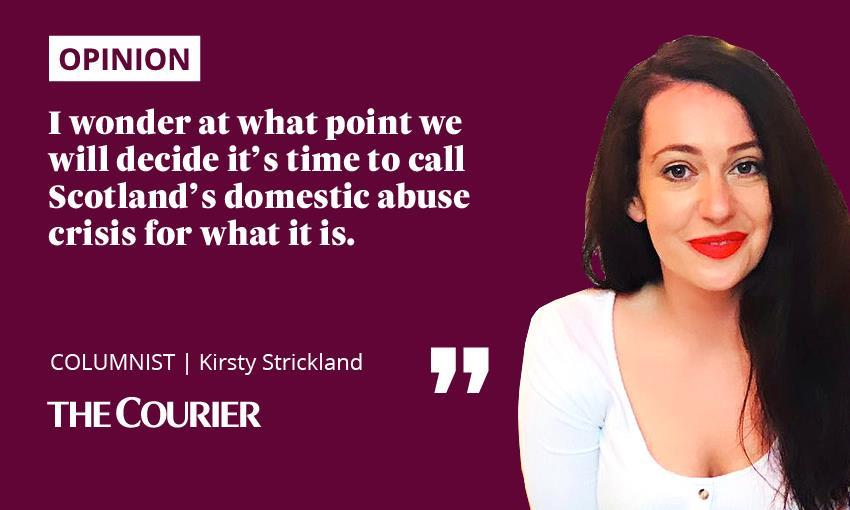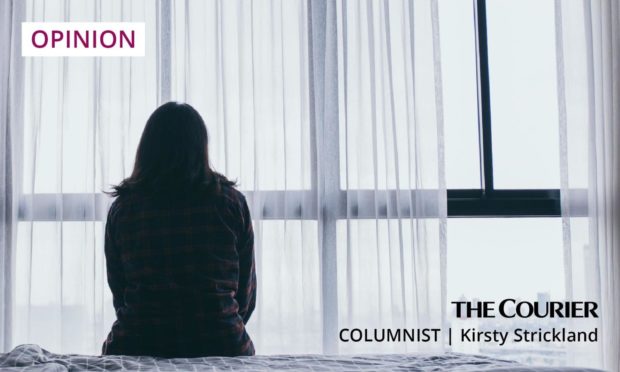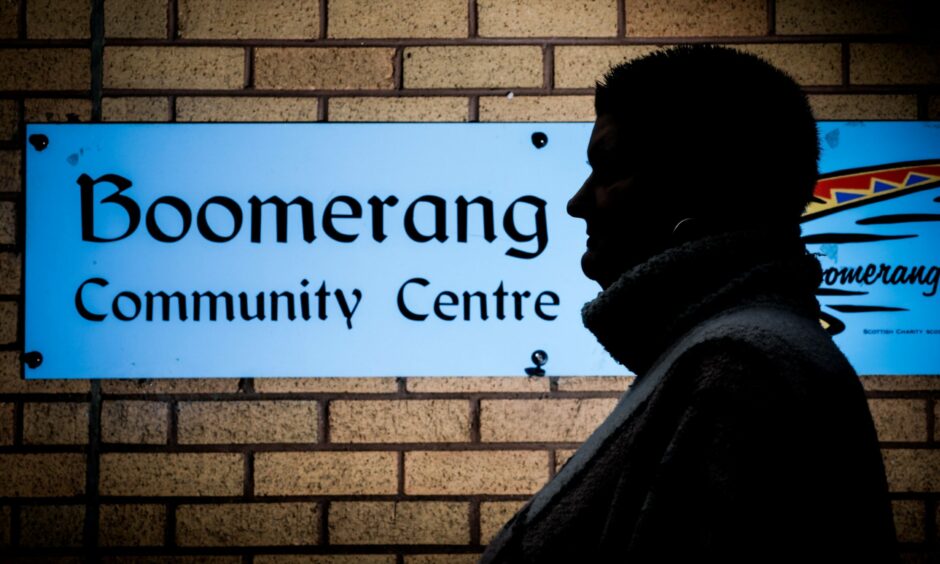In 2020/21, there were 33,425 charges relating to domestic abuse reported to the Crown Office and Procurator Fiscal Service.
That figure alone should be enough to make us pause and reflect.
But when you consider that it doesn’t include the huge number of instances of domestic abuse that aren’t reported, it’s even more shocking.
Cases reported to prosecutors in Scotland have reached their highest level in five years.
Lockdown undoubtedly had an impact, though charities that support women and children living with domestic abuse are at pains to point out it didn’t cause the abuse itself.

What it did was give abusive men – and when we’re talking about this type of crime, the overwhelming majority of perpetrators ARE men – more opportunities to abuse and control their victims.
There was a heated argument at First Minister’s Questions last week over ambulance waiting times.
Scottish Conservative leader Douglas Ross insisted the recent problems represented a crisis and he urged the first minister to describe it as such.
Every year, we read the latest sobering statistics around drug deaths in Scotland.
And every year politicians rightly talk about what more we need to do to address our drug death crisis.
Heartbreaking stories of people dying while waiting for an ambulance must be a wake-up call to the SNP.
Why won't @NicolaSturgeon correct Humza Yousaf's dangerous "think twice" comment?
The Health Secretary should provide solutions – but @HumzaYousaf is the problem. pic.twitter.com/oVomTMd31d
— Douglas Ross MP MSP (@Douglas4Moray) September 16, 2021
I wonder at what point we will decide it’s time to call Scotland’s domestic abuse crisis for what it is.
Responding to the latest figures Director of Scottish Women’s Aid, Dr Marsha Scott, said:
“These statistics by COPFS highlight not only the sheer enormity of domestic abuse in Scotland, but the increased risk to survivors that has been ongoing since the start of the COVID-19 pandemic.’
‘’It is also worth noting that the most women do not report to police, so these figures represent only a fraction of what is actually happening in our families and communities.’’
Domestic abuse rise in Tayside and Fife
One of the communities most badly affected by the crisis is Fife and Tayside, where cases rose on the previous year.
Dundee has the highest number of cases per head of population in Scotland.
There are over 30 amazing, expert Women's Aid services across Scotland.
If you are looking for confidential, safe and understanding support around #DomesticAbuse, find your nearest Women's Aid here: https://t.co/GHVUhwfLaM pic.twitter.com/XD4jHXhOXY
— Scottish Women's Aid (@scotwomensaid) September 8, 2021
This morning, I read a story in The Courier that was both uplifting and sad at the same time.
It was about a Dundee woman who has set up a support group for survivors of domestic abuse.
She has first-hand experience of what these women are going through and decided to use her experiences to help others.
The group come together each week to learn new skills and it’s a space where they can support one another.
Valerie (not her real name) says:
“A lot of the things I’m giving them is almost like an imaginary tool box.
“I’m giving these women things that either I’ve used or I think could be beneficial.
“I want these women to make friends with other victims so that we all understand each other, we can all empower each other.”
How admirable that a woman would dedicate her time and energy to helping others.
How sad it is that we still need women like Valerie and groups like hers.
Leaving is not straightforward
One of the common refrains we hear about domestic abuse, particularly on social media, where empathy is often in short-supply, is: why didn’t she just leave?
Sometimes, this question is posed without any obvious malice.
Its thoughtlessness comes from a lack of understanding.
Many people who don’t have direct experience of domestic abuse will read horrific reports of court cases in the media and can’t fathom why a woman wouldn’t flee the first, second or third time her partner behaved in an abusive way towards her.
But if you speak to survivors of domestic abuse they will tell you that the reality is a lot more complicated.
The victim may have been systematically isolated from her wider support network of friends and family… leaving isn’t as simple as just packing a bag
There is often a cycle of abuse.
Months, even years, can go by where their partner is loving and attentive.
It doesn’t start straight away and by then, their life is entwined with that person’s.
They might have a home together, a marriage, children and pets.
Control is a huge factor. The victim may have been systematically isolated from her wider support network of friends and family.
She may have lost control over her finances and day-to-day decision making.
So leaving isn’t as simple as just packing a bag.
Where does she go and how long does she stay there?
Who does she ask for help?
Can the kids stay in the same school, with the friends that they have known for years, or will they have to start again?
Support exists – and more is required
Scotland’s domestic abuse figures – both the known and the unknown – read like a crisis.
They certainly are for the people behind the statistics.
Each represents lives that have been upended and people that have been though some form of trauma.
Whether we call it a crisis or not, it’s time we treated it as one.
If you feel scared of your partner or ex-partner, or if you are worried about someone you know, get in touch with Scotland’s 24-hour Domestic Abuse and Forced Marriage Helpline on 0800 027 1234 for support and information. You can also email and web chat from www.sdafmh.org.uk. There are translation and interpreting services available.

